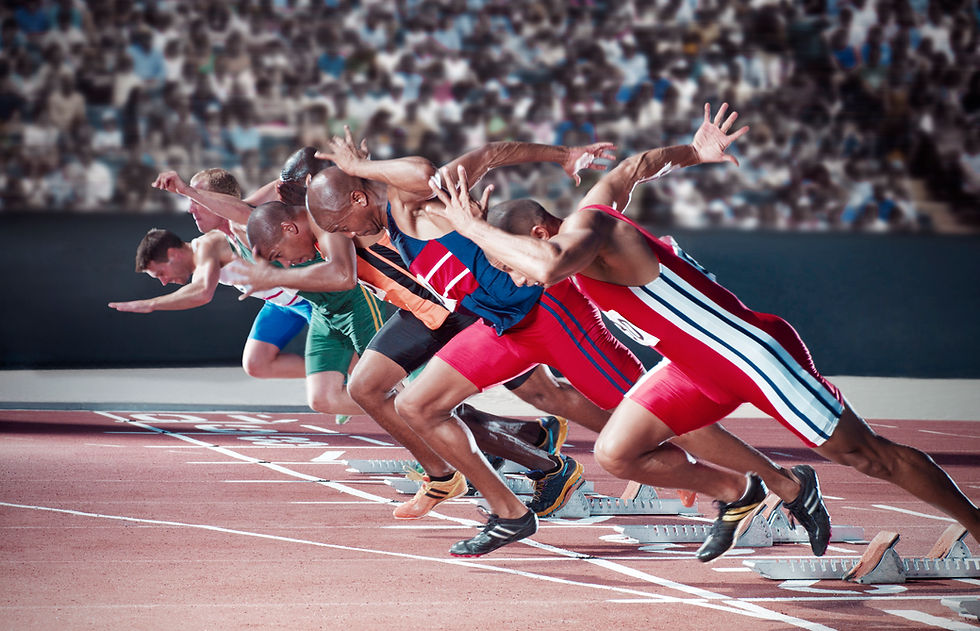MASTERING ACL RECOVERY : AN ADVENTURE STORY (PART 1)
- Team PhysioQinesis : Credit Arpita Pawar
- Sep 20, 2024
- 3 min read
Updated: Feb 7

Dealing with an ACL injury ? Think of it as embarking on a thrilling two-part adventure. Each phase is crucial to ensuring your recovery is smooth and successful. Here’s your guide to navigating this journey
To diagnose a condition, you often need to visit a doctor, who will perform various tests to determine the cause of your symptoms and how to treat them. In the case of an ACL tear, knee buckling while walking and instability while performing sport specific or high intensity activities may be the primary symptoms that will present rather than pain. Pain is not always the sole indicator for treatment, as other underlying issues might be present.
For diagnosing an anterior cruciate ligament (ACL) injury, a physiotherapist use special tests such as the anterior drawer test, Lachman test, and medial tibial stress test. These tests help determine if the ACL is compromised. Once a proper diagnosis is made, treatment can begin. The treatment phase is lengthy, often requiring 9 to 12 months of rehabilitation. Success depends on the patient's patience and dedication to strengthening their body. To achieve a successful comeback, focus on improving agility, strength and flexibility. Mastering these areas will help you return to the field effectively, despite the ACL injury and achieve a fit-to-play level.
So the first phase starts from here,

The Conservative Management Quest
Rest-Recover :- Just like any great hero needs a break, your ACL needs time to heal. Embrace rest as the first step of your quest. Avoid putting unnecessary strain on your knee, and let your body do what it does best heal.
Bracing: Sometimes, a trusty brace can be your best ally. It offers additional support and helps you navigate through your daily adventures with more confidence.
Physical Therapy :- Enter the realm of physical therapy, where you’ll face the challenge of strengthening your knee. Focus on exercises designed to rebuild strength and stability. This phase is all about patience and persistence.
Strength Training :- Strength training, also known as resistance training, focuses on improving muscle strength and endurance through exercises that involve lifting weights, using resistance bands, or performing bodyweight exercises. The main goals of strength training are to increase muscle mass, enhance bone density, and boost overall functional strength. This type of training can be tailored to various fitness levels and needs, from general health and fitness to sports-specific conditioning and injury rehabilitation. Key components include progressive overload gradually increasing resistance, proper technique, and adequate recovery.
Plyometric Exercises :- Plyometric training involves exercises that generate rapid and explosive movements, aiming to increase power, strength, and speed. It typically includes activities like jump squats, box jumps, and single leg hop. This type of training is particularly useful for athletes to improve their performance in sports that require quick, explosive actions. It enhances the efficiency of the neuromuscular system and can help with the rehabilitation process by rebuilding strength and agility.

Flexibility and Mobility :- Flexibility helps prevent injuries by allowing muscles and tendons to stretch and lengthen. And it can be improved through various stretching exercises, such as static stretches (holding a stretch for a period of time), dynamic stretches (moving parts of your body through their full range of motion), and yoga. Where as mobility generally refers to the ability to move freely and easily.
Proper Technique :- Proper technique refers to the correct method of performing exercises or movements to ensure effectiveness and safety. It involves :-
a. Body Alignment :- Keeping the body in the right position to optimize performance and reduce strain. For example, maintaining a neutral spine during a deadlift.
b. Form executing each exercise with precise movement patterns. For instance, keeping knees in line with toes during a squat.
c. Movement Control :- Performing exercises with smooth, controlled motions rather than jerky or rapid movements. This helps in effectively targeting muscles and preventing injuries.
Using proper technique is crucial for achieving desired results and avoiding injury during physical activities.
Balance and Proprioception :- ACL affects the proprioceptors and thereby affecting the balance and stability. Training on Balance boards and challenging your stability in multiple directions can prevent reinjuries.
After completing these steps, if you think your work is done, you might be mistaken. The main phase of getting "fit to play" begins here, so stay tuned for Part 2, where we’ll dive deeper into advanced training techniques and tips to ensure a triumphant return to the field !




Comments